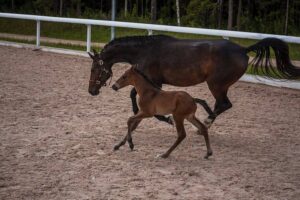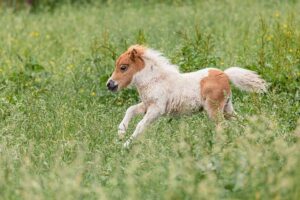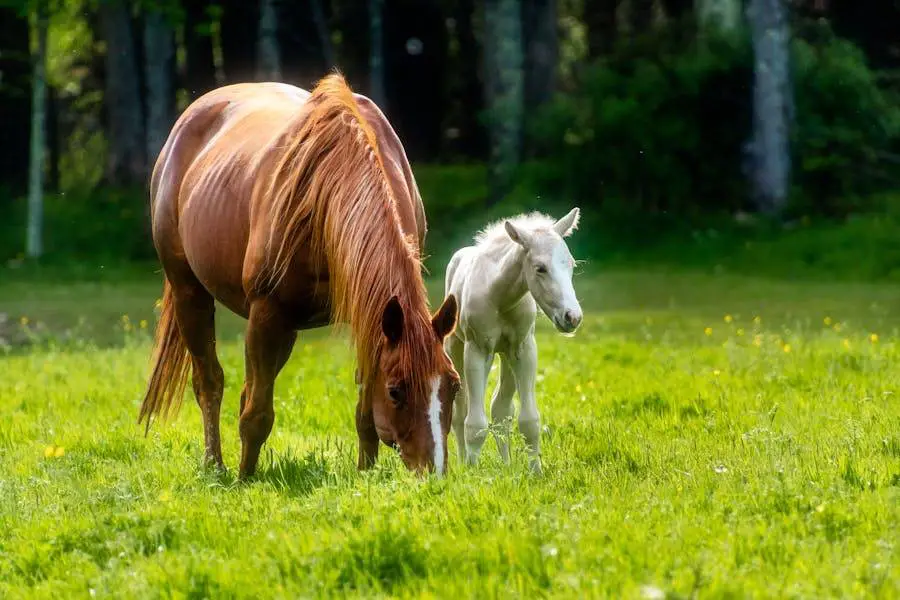Table of Contents
Weaning is a significant milestone in the life of a foal and its mother, marking the transition from milk to solid food and fostering independence.

However, the process can be stressful for both mare and foal, as they navigate the emotional and physical changes brought about by separation.
This guide aims to provide a comprehensive overview of how to reintroduce a mare and her foal after weaning, ensuring a smooth transition for both.
Understanding the Weaning Process
The Biological Changes During Weaning
Weaning brings about a host of biological changes in both the mare and the foal. For the mare, the cessation of lactation allows her body to recover and regain condition.
For the foal, the digestive system adapts to digesting solid food exclusively. Understanding these changes helps prepare for the reintroduction process.
Psychological Impact of Weaning on Mare and Foal
Weaning also has psychological implications. It’s a stressful period as the foal adjusts to life without its mother’s constant presence.
On the other hand, mares may also experience stress due to the abrupt ending of their nurturing role. Preparing for these psychological shifts is a crucial aspect of successful reintroduction.
Preparing for Reintroduction
Assessing the Readiness of Mare and Foal
Before initiating the reintroduction process, it’s critical to evaluate the readiness of both the mare and foal. This involves keen observation and understanding of their behaviors and overall health.
The foal should be comfortably consuming solids and drinking water independently. Monitor its appetite carefully. A healthy, steady appetite usually indicates that the foal has adjusted well post-weaning.
Also, observe the foal’s behavior in its separate environment. It should appear confident and comfortable, engaging with other horses and showing curiosity about its surroundings.
The mare’s readiness is equally essential. She should have stopped producing milk, which usually takes a few weeks post-weaning.
The cessation of lactation signals that her body is recovering from the demands of motherhood. Her behavior should also indicate that she has adjusted to the separation.
Look for signs of contentment and normalcy, such as regular eating habits and interaction with other horses.
Creating a Safe Environment for Reintroduction
The environment for reintroduction plays a significant role in the success of the process. It should be familiar to both the mare and foal to minimize stress and anxiety.
If possible, choose a paddock or enclosure where both of them have spent time before.
The reintroduction area should be spacious, allowing both the mare and foal ample room to move around and escape if they feel threatened.
Avoid tight corners or enclosed spaces where the foal might feel trapped.
Ensure the fencing is secure and safe. It should be high enough to prevent the foal from jumping over and sturdy enough to withstand any potential impact if the mare or foal becomes agitated and bumps into it.
Smooth, rounded edges are preferable to avoid injury. Consider the presence of other horses in the reintroduction area.
It can be beneficial to have other equine company during reintroduction, as they can provide a distraction and help diffuse tension.

However, be cautious about introducing too many new horses at once, as it can overwhelm the foal.
Lastly, consider the availability of resources like food and water. There should be enough for both mare and foal to avoid competition and potential aggression.
Providing multiple feeding and watering points can prevent resource guarding and promote peaceful coexistence.
The Initial Phase of Reintroduction
First Contact: Controlled Meetings
The initial phase of reintroduction is crucial in setting the tone for the mare and foal’s renewed relationship. The first few meetings should be carefully controlled and supervised to ensure a smooth transition.
Start by allowing the mare and foal to see and smell each other across a sturdy fence. This physical barrier provides safety while allowing them to reacquaint themselves with each other’s presence.
Keep these initial interactions short, gradually increasing the duration over time.
During this phase, it’s important not to rush the process. Allow the mare and foal to dictate the pace of their reunion.
Some pairs might feel comfortable with each other quickly, while others may take more time to adjust. Be patient and let them interact at their own comfort level.
Monitoring Behavioral Responses
Observing and interpreting their behavioral responses during these initial meetings is crucial. This will help you gauge their comfort level and readiness to move forward.
Look for signs of relaxation and curiosity. These can include the foal approaching the mare, the mare sniffing or nuzzling the foal, relaxed ears, and calm body language.
These are positive indicators that they are comfortable with each other’s presence.
On the other hand, signs of aggression or fear such as pinned ears, kicking, biting, or avoidance behavior indicate that they’re not yet ready for closer contact.
In such cases, continue with the controlled meetings until they show signs of acceptance and comfort.
It’s also important to monitor their behavior after the meetings.
If either the mare or foal shows signs of stress or anxiety post-interaction, such as pacing, excessive whinnying, or changes in appetite, it might be necessary to slow down the process.
Nurturing the Renewed Relationship
Facilitating Bonding Through Shared Activities
Once the mare and foal are comfortable in each other’s presence again, the next step is to facilitate bonding through shared activities.
This will help them rebuild their relationship while promoting the foal’s continuing independence.
One of the easiest and most natural activities is grazing together. This allows them to spend time in close proximity while engaging in a calming, familiar activity.
It can also provide opportunities for the foal to learn from its mother, observing her grazing habits and preferences.
Playing is another great bonding activity, especially for younger, energetic foals. Encourage play by providing safe toys or introducing gentle games.
However, make sure to monitor these play sessions to ensure they remain safe and positive.
Walking or trotting together around the paddock or enclosure can also be beneficial.
This not only provides exercise but also helps reinforce the bond between mare and foal as they navigate their environment together.
Maintaining Healthy Boundaries

While facilitating bonding, it’s also crucial to maintain healthy boundaries.
This is particularly important to support the foal’s growing independence and prevent any regression to pre-weaning behavior, such as attempting to nurse.
One way to maintain boundaries is by separating the mare and foal during feeding times. This ensures that the foal continues to eat solid food and doesn’t become reliant on the mare for nourishment.
Another method is to enforce periods of separation throughout the day. This could involve taking the foal or mare out of the enclosure for short periods, gradually increasing the duration over time.
This helps the foal get accustomed to spending time away from its mother, reinforcing its independence.
Remember, nurturing the renewed relationship between the mare and foal is a delicate balancing act.
While promoting bonding and positive interactions, it’s also important to foster independence and maintain healthy boundaries.
By doing so, you’ll be setting up both mare and foal for a successful post-weaning relationship.
Dealing with Potential Challenges
Addressing Aggression and Dominance Issues
Reintroduction might bring up issues of aggression or dominance. Address these promptly and consult an equine behaviorist if needed.
Positive reinforcement and patient, consistent training can help manage these issues.
Overcoming Anxiety and Separation Stress
Separation anxiety is another potential challenge. Gradual reintroduction, plenty of positive experiences together, and providing a consistent routine can help alleviate this stress.
Conclusion
Reintroducing a mare and her foal after weaning is a delicate process that requires patience, understanding, and careful management.
By following these guidelines, you can help ensure a smooth transition, nurturing the renewed relationship between mare and foal while supporting their health and wellbeing.

